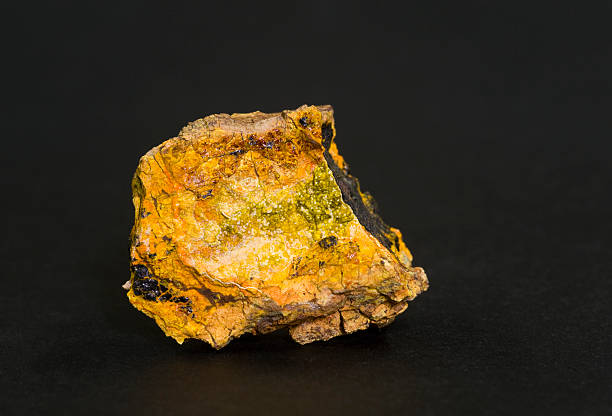Russian state-owned atomic energy corporation Rosatom which recently announced plans to start mining uranium in Namibia by 2029 will seek to invest approximately N$9 billion to kickstart operations.
The corporation – through its global mining company Uranium One – plans to complete the prospecting and exploration phase of the project by 2026, dubbed the Wings project. Exploration started in 2010, with geological studies conducted between 2018 and 2021 confirming the presence of a large sandstone-type uranium deposit.
Planned output at the project is measured at 3,000 metric tons of uranium per year. Rosatom will utilize the In Situ Leaching (ISL) method – the primary method of uranium mining worldwide but a first in Africa – with the aim of ensuring effective and sustainable production.
With an initially-projected lifespan of 25 years, the project will proceed to its next stage of development following data collection, an environmental impact study and costs.
According to Wings Project Manager Kirill Egorov-Kirillov, “If exploration and prospecting results are positive and the use of ISL is justified, more than N$5.4 billion may be invested in a uranium mill.”
Following the start of production, the Wings project is expected to increase Namibia’s Gross Domestic Product by between 1% and 2%.
Egorov-Kirillov added that“over N$900 million has been invested in the Namibian economy since the launch of the Project Wings.
“This will make a sizable contribution to the national budget and create 500 jobs for the locals. Even now, while exploration activities are still underway, our contractors hire local professionals. Last year, over 150 local residents worked for the project,” he notes.
Rosatom has also announced its pilot mining and processing venture in Tanzania, which will span from 2023 to 2025. The Mkuju River project, focused on the Nyota deposit, holds substantial resources, with 152 million tonnes of ore in reserve, making it one of the world’s largest deposits. The initial stage of production is projected to yield 5 tonnes of yellowcake, a uranium concentrate powder, with an eventual target of 3,000 tonnes per year. In 2022, Rosatom mined approximately 7,000 tonnes of uranium, with 4,500 tonnes produced by Uranium One Group.
Beyond its uranium mining activities, Rosatom also maintains a dominant market presence as the world’s largest foreign nuclear power plant constructor and operator, with a 74% market share. The corporation is involved in cooperative projects and investments in various regions, spanning from Latin America to East Asia, contributing to the construction of 37% of nuclear reactors worldwide.
Implications for Namibia and Tanzania
Rosatom’s announcement bears significant implications for both Namibia and Tanzania, countries endowed with substantial uranium reserves.
For Namibia, the project promises job creation and economic growth. Direct employment opportunities for approximately 600 individuals, coupled with indirect job creation in the construction and service sectors, are anticipated. The project is also expected to bolster Namibia’s GDP by 1-2% annually.
In Tanzania, the venture offers a much-needed injection of foreign investment. Rosatom’s commitment to invest up to N$9 billion in the project signifies a considerable boost to the Tanzanian economy. The project is also expected to generate employment opportunities, with around 1,000 individuals directly employed.
Assessing environmental and economic risks
As with any mining project, the uranium mining operations in Namibia pose environmental risks, particularly given its location in the delicate Namib Desert ecosystem. Potential pollution of the desert and its wildlife is a concern.
Rosatom asserts its commitment to mitigating environmental risks by utilizing advanced environmental technologies and closely monitoring the project’s impact to prevent environmental damage.
Nonetheless, environmental groups have raised apprehensions, emphasizing the potentially significant impact on the Namib Desert and its wildlife.
From an economic perspective, the uranium mining project in Namibia is a long-term investment with expected production not commencing until 2029. There is a risk of project delays or cancellations, which would have substantial implications for the Namibian economy. Additionally, fluctuations in uranium prices could affect project profitability.
Despite these risks, the Namibian government maintains an optimistic outlook, considering the project a substantial opportunity to diversify the nation’s economy and generate employment opportunities.
Rosatom is also the world’s largest foreign nuclear power plant constructor and operator, owning a market share of 74% in the sector. 37% of the nuclear reactors being built worldwide are being constructed by the Russian company, as the corporation cooperates and invests in projects that spread all around the globe, from Latin America to East Asia.



Leave a Reply